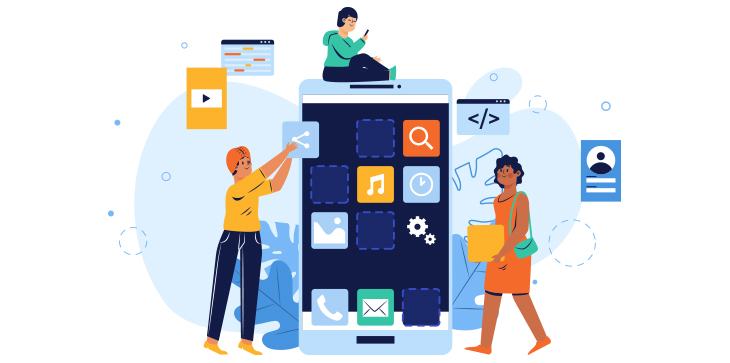
In today's fast-paced business environment, mobile access to enterprise resources is no longer a luxury but a necessity. Oracle's Enterprise Resource Planning (ERP) and Human Capital Management (HCM) systems are powerful tools that help organizations manage their operations and workforce effectively. However, the ability to access and interact with these systems via mobile applications significantly enhances their utility, offering convenience, flexibility, and efficiency. This blog delves into the key aspects of developing mobile applications for Oracle ERP and HCM, exploring the benefits, challenges, and best practices.
Oracle ERP is a comprehensive suite of integrated applications that support various business functions, including finance, procurement, project management, risk management, and supply chain operations. These applications streamline business processes, improve data accuracy, and provide real-time insights to aid decision-making.
Oracle HCM is a set of applications designed to manage human resources functions. It encompasses modules for recruiting, workforce management, talent management, payroll, and learning and development. Oracle HCM helps organizations manage their workforce more effectively, enhance employee engagement, and optimize HR processes.
Mobile applications provide users with the ability to access ERP and HCM systems anytime, anywhere. This is particularly beneficial for managers and employees who are often on the move and need to perform tasks or access information quickly.
With mobile access, routine tasks such as approving purchase orders, submitting expense reports, and managing time and attendance can be done on the go. This reduces bottlenecks and speeds up workflows, leading to greater overall efficiency.
Mobile applications offer a user-friendly interface that can enhance employee engagement. Features such as push notifications, real-time updates, and easy access to information make it easier for employees to stay connected and involved with their work and the organization.
A successful mobile application must prioritize user experience. The interface should be intuitive and easy to navigate, with a design that adapts well to different screen sizes and resolutions. Understanding the specific needs and behaviors of your target users is crucial in designing a user-centric application.
Seamless integration with Oracle ERP and HCM systems is essential. This involves using Oracle's APIs and web services to ensure that the mobile application can communicate effectively with the backend systems. Real-time data synchronization is critical to provide users with up-to-date information.
Security is a paramount concern when developing mobile applications for enterprise use. Ensuring data privacy and protection requires implementing robust authentication and authorization mechanisms, encrypting data both at rest and in transit, and adhering to compliance standards.
Mobile applications should be optimized for performance to provide a smooth and responsive user experience. This includes minimizing load times, handling offline scenarios gracefully, and ensuring that the application can perform well even with limited network connectivity.
Oracle Mobile Hub is a platform that provides tools and services for developing and deploying mobile applications integrated with Oracle Cloud services. It offers features such as mobile backend as a service (MBaaS), push notifications, user management, and analytics, making it easier to build and manage mobile applications.
When developing mobile applications, adopting a mobile-first strategy ensures that the design and functionality are optimized for mobile devices from the outset. This approach helps in creating applications that are tailored to the mobile experience rather than adapting desktop applications for mobile use.
Using agile development methodologies allows for iterative development and continuous feedback, ensuring that the application meets user needs effectively. Additionally, designing for scalability ensures that the application can handle increasing loads and growing user bases without compromising performance.
When developing mobile applications, adopting a mobile-first strategy ensures that the design and functionality are optimized for mobile devices from the outset. This approach helps in creating applications that are tailored to the mobile experience rather than adapting desktop applications for mobile use.
Thorough testing is critical to identify and fix issues before deployment. This includes functional testing, performance testing, security testing, and usability testing. Ensuring the application works seamlessly across different devices and operating systems is vital for a smooth user experience.


